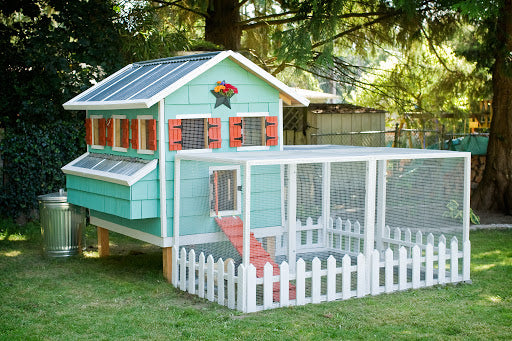
⭐SSL Certificates For 100% Security & Tracking Number for Every Order. Click Here
🏬We have America / UK /Australia warehouse. We will ship from the nearest warehouse.


Easy to follow plans for the chicken coop pictured.
This is a downloadable PDF files,we will sent to your Email after purchase.
The PDF file contains 8 sizes of chicken coop(4'x4',4'x8',8'x10',5'x6',8'x4',8'x8',10'x8')
The plans are in US measurements (feet and inches not metric)
The downloadable pdf files is printer friendly on standard size paper.
Includes 14 PDF files of comprehensive CAD drawings, detailed 3d diagrams, step by step instructions, material list, cut lists, recommended tools list, and all key measurements and details.
If you have not received the PDF file in your email, please contact our Message or Email service@livinggoodsshop.com
This coop is designed to hold up to 12 chickens comfortably.
Cost to build averages around $900-$1200 depending on your location and your choice of roofing and siding selection.
If you can’t build your favorite chicken coop, you can also choose to buy it directly from our shop.
This coop was designed by an experienced carpenter and is constructed to last for many years. All of my plans are designed and test by myself from start to finish.
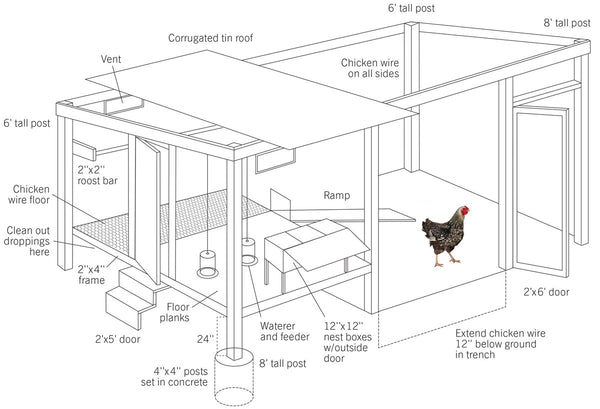
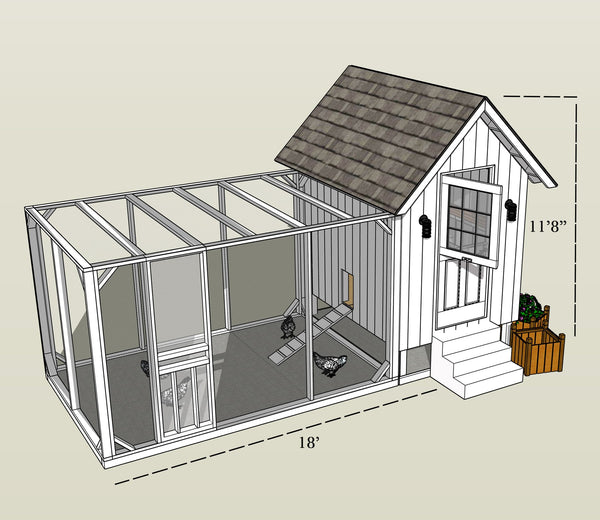

Getting ready to build your first chicken coop? You’re going to need some good step-by-step instructions to complete the project to your hens liking. These eight backyard chicken coop plans offer a variety of sizes, shapes, and styles to make you and your chickens happy!
Don’t panic, take a deep breath!
If you are concerned that you won’t be able to read the coop plans, that they will be too technical, you are not alone.
I cannot read and execute building plans to save my life, yet I have built a total of 8 coops so far, with more to come. The chickens don’t care if the corners aren’t square or it is not the prettiest building in town – it is draft free, dry and keeps them safe and warm.
The point is, don’t be intimidated, you can do this!
Below we have 8 DIY chicken coop plans with simple step by step instructions. We will also give you some general guidelines about coops to help smooth the path for you.
The biggest hurdle is getting over your fears or anxieties, so sit down, have a glass of wine or a cup of tea and read on!
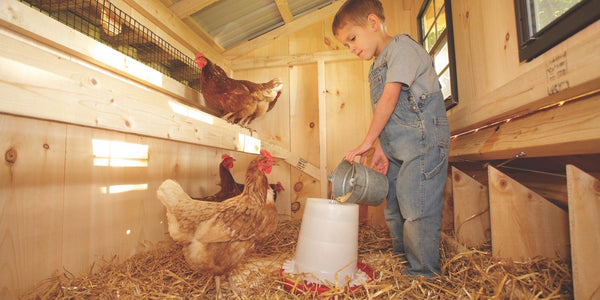
What are the ‘Must Haves’ of a DIY Coop?
Before we get to the plans, let’s take a look at what your coop must provide for your hens.
The must have list is fairly short, but essential:
- Sufficient space for the hens
- Keeps chickens in and predators out
- Ventilation
- Draft free
- Easy to clean and sanitize with good drainage
- Protection from the elements
Let’s look at each one of these in turn below.

How Big Should Your Coop Be?
In order to answer this question, you have to know what chickens you are getting. Are they bantams or large fowl? Are they considered standard size or extra-large such as Jersey Giants.
If you have ordered from a hatchery, they usually have a helpful section in the catalog that will give you space requirements for chickens.
In general, the following space requirements apply:
- Bantams – 2sq.ft./bird in the coop, 4sq.ft/bird in the run.
- Standard large fowl – 4sq.ft/bird in the coop, 8sq.ft in the run.
- Extra-large birds – minimumft/bird in the coop, 8sq.ft in the run.
As a note in the plans below we’ve assumed 3 square foot per chicken.
A note of caution here – these are minimum space requirements per bird. If you can build bigger, do so. It is likely that at some point you will get more birds; this is known as ‘chicken math’ or ‘more hens’ disease’!
The coop can be tall enough for you to walk into, or small enough for the hens and nothing else, your choice.
My preference is a walk-in coop because I don’t want to be leaning over to see what’s going on inside the coop or leaning in to ‘muck out’ on a regular basis.
Size requirements in the coop are really quite essential for the birds’ well-being, especially in the winter months. In close confinement, your pretty, lovable hens will start picking and plucking at each other if they don’t have sufficient room.
It can be very ugly, so don’t skimp on space for your girls.
It really is important that you have an attached run area to your coop for extra space. If you don’t have a run and want to keep your hens locked up all the time, the confined space requirements are going to be significantly more.
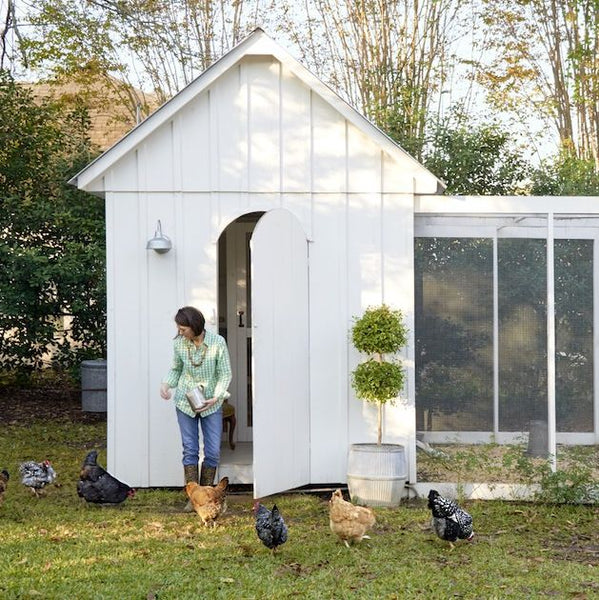
Advantages of Building your Own Chicken Coop
The easiest and most plentiful material for coop building is wood.
If you do decide to build your own coop, you can save a lot of money by using stuff that is freely available, such as wooden pallets. Businesses give pallets away free just to get rid of them. As long as the wood is heat treated it is fine to build with.
Building your own coop also means you get the exact coop you want! Something unique that perfectly meets your needs.
A word of caution here – many web sites I visited researching this article advocated for using chicken wire to cover windows and also in the run area. Chicken wire is designed to keep chickens in, but will not keep predators out.
You should use wire mesh (hardware cloth) no larger than ½ inch for at least the bottom three foot of the run, you can if you wish use chicken wire higher up. Raccoons can and will bite through chicken wire to get to your birds, hardware mesh will keep them out, this applies to all openings too – windows and vents.
Using anything larger than ½ inch invites weasels and other small critters to visit your girls…not something you want to happen.

Coop Ventilation and Access
Without a doubt, ventilation to the coop is vital. In summer the vents will allow the warmer air out, keeping the coop cooler and in winter it allows the warm, moist stale air out.
Moist air in the coop during the colder months will give your birds frostbite to the combs and wattles – especially breeds that have large combs and wattles.
It is the combination of cold and moisture on a warm comb that causes the problem. As contrary as it might sound, ventilation will release the moisture from the coop. A well ventilated coop will reduce problems to an absolute minimum.
How big a vent and where to put it? The vent should be up near the ceiling well above the heads of your chickens (remember, no drafts).
The general rule of thumb is 1sq.ft of vent per 10sq.ft of floor space in colder climates. In warmer areas, more is better in order to maintain an ambient temperature in the coop. At temperatures over 90F, the chickens will start to be stressed, which leads to problems.
A window in the coop will ideally be south facing, but can be placed elsewhere except the north side. The window will allow sunlight into the coop and add extra ventilation too.
Access to the coop for you should be a standard sized door so that you don’t crack your head every time you enter.
Chicken access is via a ‘pop’ door. A pop door is simply a hole cut into the coop about 12 inches tall and 14 inches wide. The extra width allows for two birds to pass in the doorway.
Oftentimes you will have a hen that likes to sit in the doorway, so the extra space allows others to come and go.
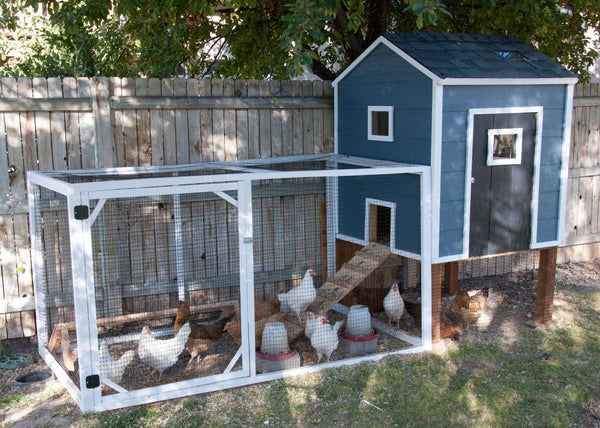
Location, Location, Location
Try to take into consideration all the things that might limit the desirability or accessibility to the coop.
Write yourself a list of desirable things for coop location:
- Dry ground, good drainage
- In a sunny spot, but shaded from the midday heat
- Easily accessible for you
- Somewhat sheltered from bad weather – as an example, you would not want to place the coop on a high spot prone to strong winds.
Before you start building your coop, visit your site area in the morning, afternoon and evening and see how the time of day affects the area. Think about it for a few days before deciding if the spot is right for you.
If you live in an urban setting, make sure the zoning laws allow you to put up a coop in your yard and keep chickens.
Sadly, there are many municipalities that do not allow chickens in the town or village, or they only allow a certain number of hens. There are likely to be rules about where you can place your coop also – such as a minimum of six feet from the neighbors’ fence.
It is your responsibility to check out the rules and regulations. Don’t want to wade through the village by-laws? Ask your local code enforcement/zoning official, they should be able to help you.
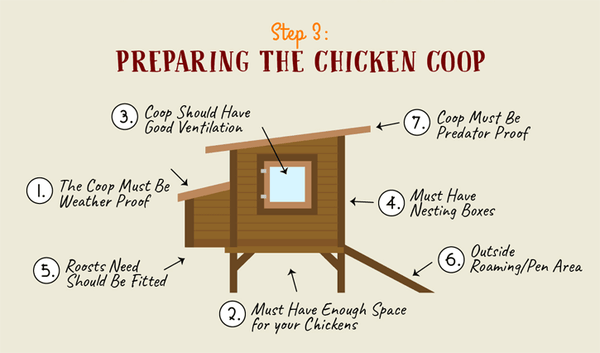
Hen Furniture: What to Include Inside the Coop
Thankfully, hens don’t require TV, internet access or most of the things us humans deem necessary. They do need some basic ‘furniture’ though.
A roosting perch is essential for them when they are old enough to perch. This perch provides the sleeping area for the hens. They will snuggle together on the bar in winter and spread out a bit during the warmer months.
Roosting perches should allow for 8-12 inches of space per bird. Chickens sleep ‘flat-footed’, so the perch should be between 2-4 inches wide for their comfort.
The ideal height from the floor should be 18-24 inches. Any higher and heavier hens run the risk of leg or foot injury when jumping down. Bantams seem to enjoy higher perches since they fly so well.
Think carefully where you will put your roost; birds poop over 70% of the total daily droppings at night. If you plan carefully, you can incorporate something like ‘poop boards’, poop hammock or some other way to easily collect and remove the poop mountains.
Tip: don’t place your nest boxes under the roost.

I use old discarded professional baking trays – they are solid metal trays about 18×24 inches which sit under the roosts. They are easy to lift out and empty as necessary.
Nest boxes are the second necessity for hens. The golden rule is one nest box for every 3-4 hens, although they will usually have one favorite box and all will want to use it!
Standard sized birds will fit nicely into a 12 x 12 inch box situated about 12 inches off the floor. Nest boxes should be place in the darkest part of the coop since hens do like a little privacy when laying their eggs. If you have very large birds such as Jersey Giants the nest box will have to be larger to accommodate the hens. Bantams require much less space – about 6 inches per box, but they can and will use the ‘big girls’ nest boxes.
Of course, you will need feeders and drinkers for your flock. The feeder can be hung in the coop, but leave the drinker outside otherwise it will contribute excess moisture to the air in the coop.
If your chickens will spend most of their time in confinement, you may want to consider adding a bathtub to their home. And when I say bathtub, I mean a dust bathing area.
Chickens take dust baths to control the oils on their bodies as well as protect themselves from external parasites. If your birds are in confinement, a dust bath is non-negotiable. Birds that live in enclosures are more susceptible to contracting parasites, thus they need access to a place to take their daily baths.
If you don’t provide one, they will undoubtedly try to make one, even if it is amongst their droppings.
Dust baths also provide an element of entertainment for your chickens. If you’ve ever seen a chicken bathing themselves, you’ll notice they appear relaxed and content. Think of a dust bath box as a spa for your chickens.
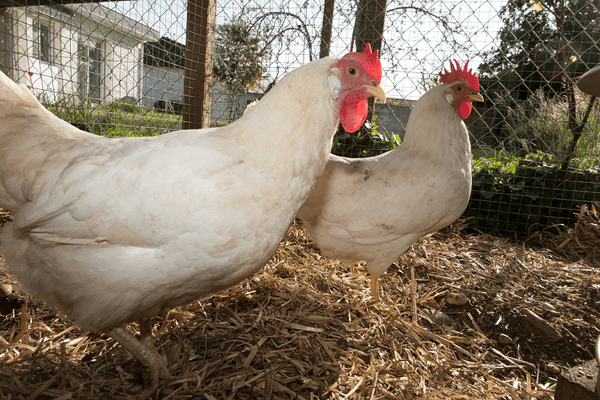
It doesn’t have to be large, and all you need is some dirt, diatomaceous earth, or sand. You can use a mixture of all of these elements to create a lovely dirt bath for your chickens. They will love it.
Keep the dust bath away from the roost and feed areas to prevent excessive dropping from falling into it.
We provide free email support if you need help at any point in the build process.
